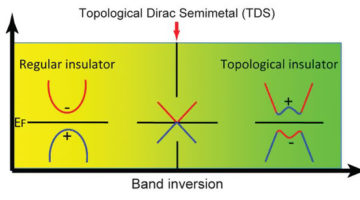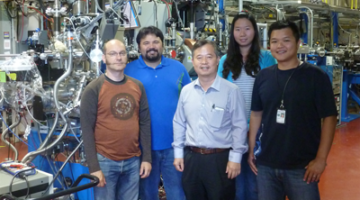As a student representative to the ALS Users Executive Committee (UEC) for the past two years, Mahati Chintapalli has gained a better understanding of how the ALS functions as an organization, while the UEC has gained a devoted and outgoing member. She’s currently a PhD student in Materials Science and has been conducting research at the ALS since 2011. Read more »
Monroe Thomas, Mechanical Technician
The weekend before the ALS was scheduled to start up again after the most recent shutdown, mechanical technician Monroe Thomas kept things running on schedule by coming in on a Saturday to pull a 300-pound capacitor “uphill” out of the new RF power supply. It’s just another “(not so) typical” day at work for him, he says. But it’s his reliability operating cranes and supervising moves of heavy equipment around the ALS that plays an integral role in keeping the facility going. Read more »
Iron is the Key to Preserving Dinosaur Soft Tissue
Researchers studying organic material from dinosaur bones have been able to show that the samples contained original soft tissue material from Mesozoic dinosaurs. The x-ray techniques at the ALS were key to showing a possible mechanism for this unexpected preservation.
Read more »![]()
![]()
Intriguing DNA Editor Has a Structural Trigger
The molecular structures of two proteins from a family of genome-editing enzymes reveal how they target and cleave DNA. The results point the way to the rational design of new and improved versions of the enzymes for basic research and genetic engineering. Read more »![]()
![]()
Graphene’s 3D Counterpart
ALS researchers have discovered a material that is essentially a 3D version of graphene — the 2D sheets of carbon through which electrons race at many times the speed at which they move through silicon. The discovery promises exciting new things to come for the high-tech industry, including much faster transistors and far more compact hard drives. Read more »![]()
![]()
ALS Data Visualization Lab Serves Up Computing Power
Even though the ALS has been in shutdown mode for almost two months, there’s one area of the facility where users have been busy. The new ALS Visualization and Analysis Lab, which opened to users in November 2013, hosts an impressive amount of computing power that’s helping scientists work through data-heavy beamline results much more quickly and efficiently. Read more »
Toyota Collaborates with the ALS and Molecular Foundry
Toyota has been working at the ALS for a few years now to gain deeper insight into the chemistry of electrolytes for use in magnesium-ion batteries. The hope is that the research eventually leads to a fully developed magnesium-based battery technology that would replace lithium-ion batteries with essentially twice the energy in the same volume. Toyota hopes to move toward this goal more quickly through a new collaborative research project at the ALS and the Molecular Foundry. Read more »
Karen Nunez, Procedures Center Manager
Procedures Center Manager Karen Nunez has been working somewhat “behind the scenes” at the ALS for the past seven years, ensuring that documentation for the many procedures involved in ALS operations is clear, correct, and up to date. She works with a plethora of ALS engineers, operators, technicians, and scientists, who all lend their technical expertise to her work. Read more »
Youngest ALS Users Go to the White House
Two seventh graders from Black Pine Circle (BPC) School in Berkeley, who came to the ALS last November on a field trip that included actual beam time earned through peer-reviewed proposals, have now made it all the way to the White House. Read more »
June 3, 2014
Tuesday, June 3 @12 noon in USB-253 Committing SINS with the ALSHans Bechtel, ALS, Beamline 5.4 From prehistoric flint blades to Chinese Jian ceramics: how the study of ancient artifacts can help create better materials for the futureNobumichi Tamura, ALS, Beamline 12.3.2 FlameRead More Read more »
- « Previous Page
- 1
- …
- 5
- 6
- 7
- 8
- 9
- …
- 17
- Next Page »








